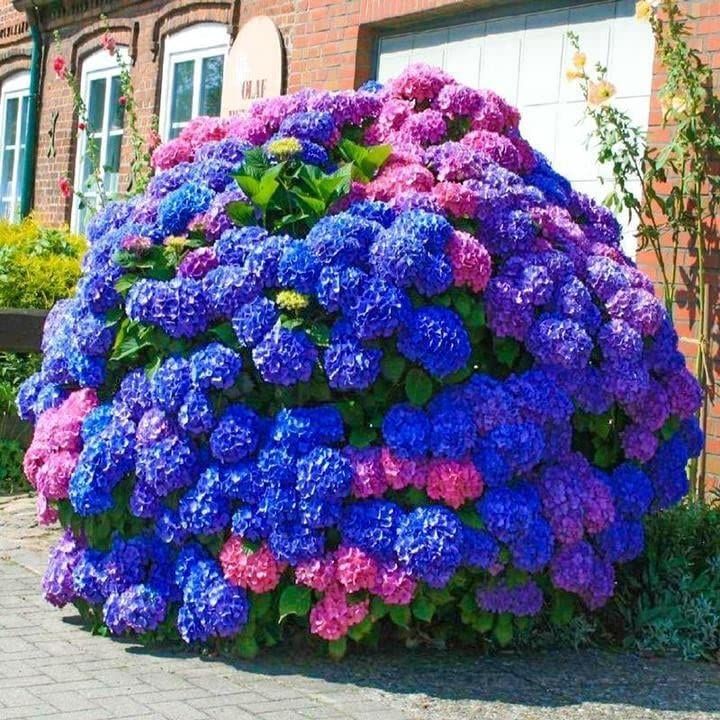Hyacinth Bulb Planting Schedule: Ensuring Vibrant Spring Blooms

Table of Contents
Choosing the Right Hyacinth Bulbs
Selecting healthy, high-quality hyacinth bulbs is the first step to success. Investing in premium bulbs significantly impacts the size and vibrancy of your blooms. Look for bulbs that are firm and plump, feeling heavy for their size. Avoid any that show signs of soft spots, mold, or damage.
Different hyacinth varieties boast unique bloom times, offering a range of colors and fragrances. Early blooming varieties typically flower in late winter to early spring, followed by mid-season and late-season bloomers. This staggered blooming allows for extended enjoyment of these beautiful spring flowers.
Where to buy your bulbs matters too. Reputable suppliers, both online and local garden centers, offer a wider selection and guarantee bulb quality.
- Look for bulbs that are firm and plump, free from soft spots or mold.
- Consider the size of the bulb; larger bulbs generally produce larger blooms. Larger bulbs often have more flower buds.
- Choose varieties with colors and fragrance preferences. From classic blue and white to vibrant pink, yellow, and purple, the choices are endless! Explore different hyacinth varieties like ‘Blue Jacket’, ‘Carnegie’, or ‘Pink Pearl’ to find your perfect match.
Ideal Planting Time for Hyacinth Bulbs
Timing is crucial for successful hyacinth cultivation. Fall planting, approximately 6-8 weeks before the first expected frost, is essential. This allows the bulbs to establish roots before winter's cold sets in. The ideal soil temperature for planting hyacinth bulbs is between 50-60°F (10-15°C).
The planting schedule will vary depending on your region and USDA hardiness zone. Those in warmer climates may need to plant slightly later, while those in colder regions may need to plant earlier to allow for sufficient root development before the ground freezes. Planting too early can result in premature sprouting, while planting too late may prevent proper root establishment, leading to weaker blooms or even failure to bloom.
- Generally, plant hyacinth bulbs in the fall, 6-8 weeks before the first expected frost.
- Soil temperature should ideally be between 50-60°F (10-15°C). Use a soil thermometer to ensure optimal conditions.
- Adjust planting schedule based on your specific USDA hardiness zone. Consult your local gardening resources for specific recommendations.
Preparing the Soil for Hyacinth Bulbs
Hyacinths thrive in well-draining soil rich in organic matter. Heavy clay soils should be amended with compost or peat moss to improve drainage and aeration. Poor drainage can lead to root rot and prevent the bulbs from flourishing.
Ensure your soil is loose and workable to prevent damaging the bulb's delicate roots during planting. Adding compost or other organic matter not only improves drainage but also provides essential nutrients for healthy growth.
- Amend heavy clay soils with compost or peat moss to improve drainage.
- Ensure the soil is rich in organic matter for optimal nutrient uptake.
- Avoid planting in areas with poor drainage, which can lead to rot. Choose a location with good air circulation.
Planting Depth and Spacing for Hyacinth Bulbs
Plant hyacinth bulbs pointed end upwards, approximately 6-8 inches deep. This ensures proper root development and emergence of the flower stem. Spacing is equally important. Overcrowding restricts airflow and can lead to smaller blooms and increased susceptibility to disease. Space bulbs 4-6 inches apart to allow for optimal growth. For a dramatic display, consider planting hyacinths in clusters.
- Plant pointed end upwards.
- Space bulbs 4-6 inches apart for adequate airflow and growth.
- Plant in clusters for a dramatic display. Consider creating drifts of color in your garden bed.
Aftercare for Hyacinth Bulbs: Watering and Fertilizing
Consistent watering is essential, especially during dry spells in spring. Keep the soil moist but avoid overwatering, which can lead to rot. Once the shoots emerge, a balanced liquid fertilizer will promote healthy growth and abundant blooms. Remember to protect your hyacinth bulbs from extreme weather conditions. Mulching around the plants helps retain soil moisture and provides insulation against frost.
- Water regularly during dry spells, especially in the spring.
- Apply a balanced liquid fertilizer once the shoots emerge.
- Mulch around the plants to retain soil moisture and protect from frost.
Conclusion
Creating a successful hyacinth bulb planting schedule involves careful consideration of several factors. By choosing healthy bulbs, selecting the right planting time, preparing the soil adequately, and providing proper aftercare, you'll be rewarded with a spectacular display of vibrant spring blooms. Follow these guidelines to transform your garden into a fragrant paradise. Start planning your vibrant spring display today by following this hyacinth bulb planting schedule! Learn more about different hyacinth varieties and other spring-blooming bulbs to further enhance your garden's beauty. Happy planting!

Featured Posts
-
 China Soybean Supply Crisis Sinograins Auction Response
May 29, 2025
China Soybean Supply Crisis Sinograins Auction Response
May 29, 2025 -
 Sinograins Soybean Auction A Strategy To Combat Supply Chain Issues In China
May 29, 2025
Sinograins Soybean Auction A Strategy To Combat Supply Chain Issues In China
May 29, 2025 -
 Wethouderschap Venlo Jozanne Van Der Veldens Terugkeer
May 29, 2025
Wethouderschap Venlo Jozanne Van Der Veldens Terugkeer
May 29, 2025 -
 Cek Cuaca Jawa Tengah Besok 23 4 Waspada Hujan Lebat
May 29, 2025
Cek Cuaca Jawa Tengah Besok 23 4 Waspada Hujan Lebat
May 29, 2025 -
 Pioneer Square Shooting Leaves Three Dead Seattle Police Investigating
May 29, 2025
Pioneer Square Shooting Leaves Three Dead Seattle Police Investigating
May 29, 2025
